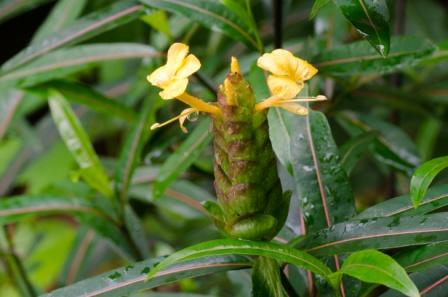
Table of Contents
Saireyaka Plant
Saireyaka plant has a lot of benefits. First, let’s see what Ayurveda has to say about it. After that, we’ll look at its morphology, Medicinal values, and Health benefits. Then, we’ll look at how to use saireyaka to get better blood circulation, feel more rested, and even cure a variety of ailments.
What Ayurveda says about saireyaka plant
The thorny plant known as Saireyaka, botanically known as Barleria prionitis, is used in Ayurvedic medicines for skin diseases and dental caries. The leaves and roots of this plant are used in external and internal medicine. It is also used in pooja for offering the flowers to the god.
The Saireyaka plant’s leaves, when macerated, are used to treat headaches and other painful ailments. They are also applied to the skin as a paste. The leaves are a good hair tonic. The roots, however, are not as useful. The leaves have much more anti-inflammatory and anti-arthritic benefits. The saireyaka plant has also been used in traditional Indian medicines for centuries.
Morphology of saireyaka plant
The Saireyaka plant grows up to 1 m tall and has a central taproot. Its leaves are small, spike like and have a distinct flavor. Its flowers are yellow, clustered and have a single seed. Saireyaka is an attractive shrub with a variety of uses. It is useful for treating spermatorrhoea, blood impurities, nervine debility, and acne. The roots and leaves are applied to boils and glandular swellings.
The stems are short and slender, and the leaves are alternate. The leaves have serrate margins, and the petiole is 1-2.5 cm long. Flowers are pale yellow, with a long pedicel and a stellate hairy calyx. The corolla measures 0.6-0.8 cm in diameter. Fruit is a subglobocarp containing three to six carpels and a smooth seed.
Medicinal values of saireyaka plant
The roots are used for internal and external medication. In addition, the oil and seeds of the plant are highly valued for their anti-inflammatory and antioxidant properties. This plant has become a popular remedy in several parts of the world.
It is often harvested in clusters. It is also used for food and in traditional medicines for inflammation, coryza, and fever.
The saireyaka plant is widely used in South India for various ailments, including rheumatic disorders, dysuria, oedema, blood impurities, and nervine debility. It is used topically to treat boils and glandular swellings. In addition to treating the body, saireyaka is used to treat skin conditions, including alopecia.
Other uses include :- Strengthening and promoting Hair growth, relives localized swelling, cures burning sensation, manage goitre, dental caries, it is a good remedy for scabies and ringworm, and is a good remedy for upper respiratory tract disorders.
Precautions in using saireyaka plant as a medicine
No severe adverse effects was noticed for Saireyeka, It grows from a central taproot, and has a single stem. Its three major properties are Dravya – substance and rasa – taste. Other important characteristics of Saireyaka are Guna – qualities and potency; Vipaka – post-digesion effect; and Karma – pharmacological activity. In addition to these features, Saireyaka has several other properties, such as Prabhava – therepeutics, and Vipaka – post-digesion effect.
The leaves, roots, and flowers of Saireyaka are widely used in Ayurvedic medicines. They are also used to treat localized swelling, oedema, and blood impurities. The oil from the saireyaka plant is used to treat goiter and cysts in blood vessels. Both juice and root paste are applied to afflicted areas and can be taken orally.
